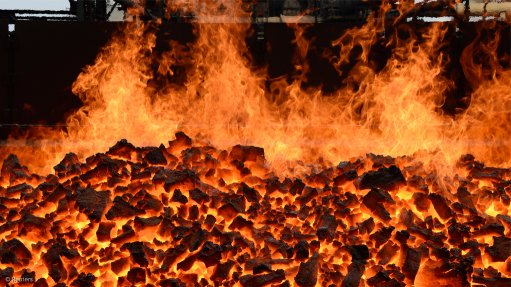
Photo by: Reuters
TORONTO (miningweekly.com) – Fortune 500 coal company Peabody Energy has filed for Chapter 11 bankruptcy protection on Wednesday, becoming the latest North American coal casualty amid a sustained industry downturn.
NYSE-listed Peabody, the world’s largest private-sector coal company producing metallurgical and thermal coal for customers in 25 countries on six continents, had voluntarily filed petitions under Chapter 11 for the majority of its US entities in the US Bankruptcy Court for the Eastern District of Missouri.
“This was a difficult decision, but it is the right path forward for Peabody. We begin today to build a highly successful global leader for tomorrow. Through today’s action, we will seek an in-court solution to Peabody’s substantial debt burden amid a historically challenged industry backdrop,” stated Peabody president and CEO Glenn Kellow.
Peabody had filed pleadings, referred to as 'first-day motions', with the US Bankruptcy Court, which were expected to enable the company to continue, among other things, paying employee wages and providing healthcare and other benefits without interruption.
In Securities and Exchange Commission filings on Wednesday, the company explained that the process would assist it to reduce its overall debt level, lower fixed charges, improve operating cash flow and position the company for long-term success, while continuing to operate under the protection of the court process.
All of the company’s mines and offices were expected to continue operating normally for the duration of the process. No Australian entities were included in the filings, and Australian operations were continuing as usual, the company advised.
Trading in the NYSE-listed stock, which had hit a peak price of $1 260.75 in June 2008, was expected to be suspended immediately, after closing at $2.07 apiece on Tuesday.
Among the concerns that contributed to the company's inability to service its significant debt load, Peabody cited continued uncertainty around global coal fundamentals, the stagnated economic growth of certain significant coal-importing nations, low natural gas prices and the potential for significant added regulatory requirements imposed on coal producers, among other factors.
Peabody followed other large North American coal companies into bankruptcy, such as former subsidiary Patriot Coal, Arch Coal, Alpha Natural Resources and Walter Energy.
Peabody had posted four consecutive yearly losses, including a $2-billion loss in 2015, on the back of revenue falling 17% to $5.6-billion.
The company listed $10.1-billion in debt and $11-billion in assets, including ownership interests in 26 active mines in the US and Australia.
Peabody advised that it had secured $800-million in debtor-in-possession financing facilities, which were arranged by Citigroup and included participation of a number of the company’s secured lenders and unsecured noteholders. Further to the company’s existing total cash position of about $913-million, Peabody believed that it had enough liquidity to operate its business worldwide post-petition and to continue the flow of goods and services to its customers in the ordinary course, post-petition.
Peabody also revealed on Wednesday that the planned sale of the company’s New Mexico and Colorado assets had fallen through after the buyer was unable to complete the transaction.
The company had retained law firm Jones Day to provide bankruptcy counsel, investment bank Lazard for financial advice and FTI Consulting for restructuring guidance.